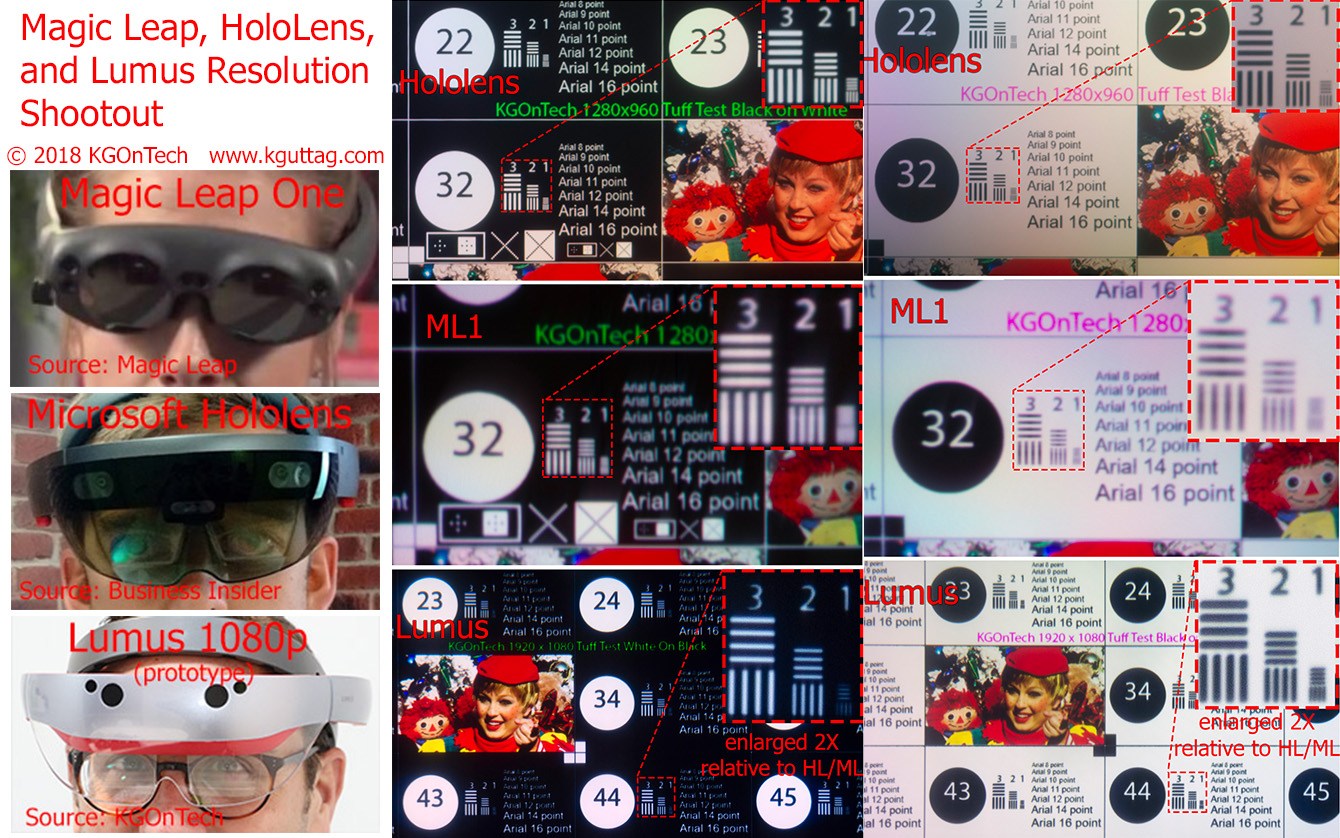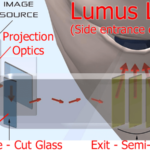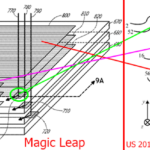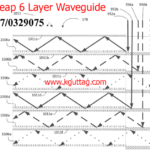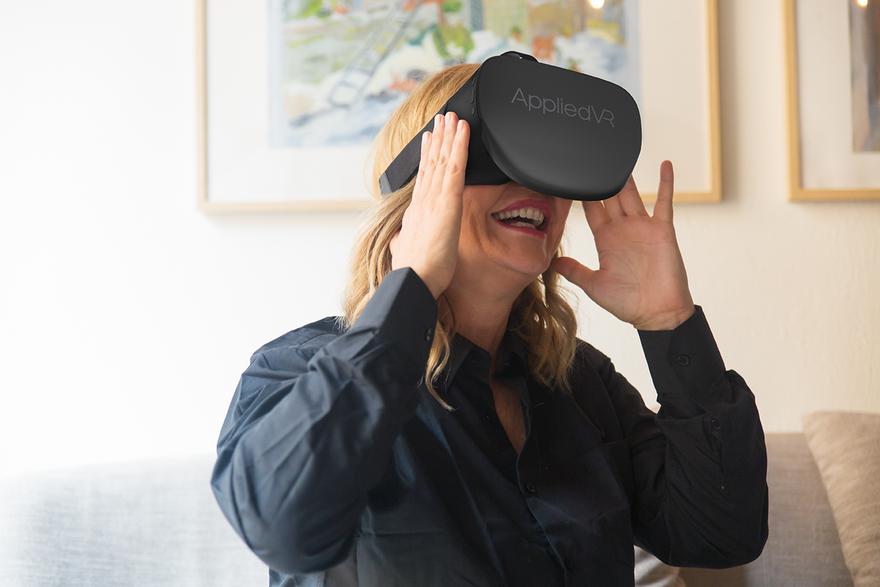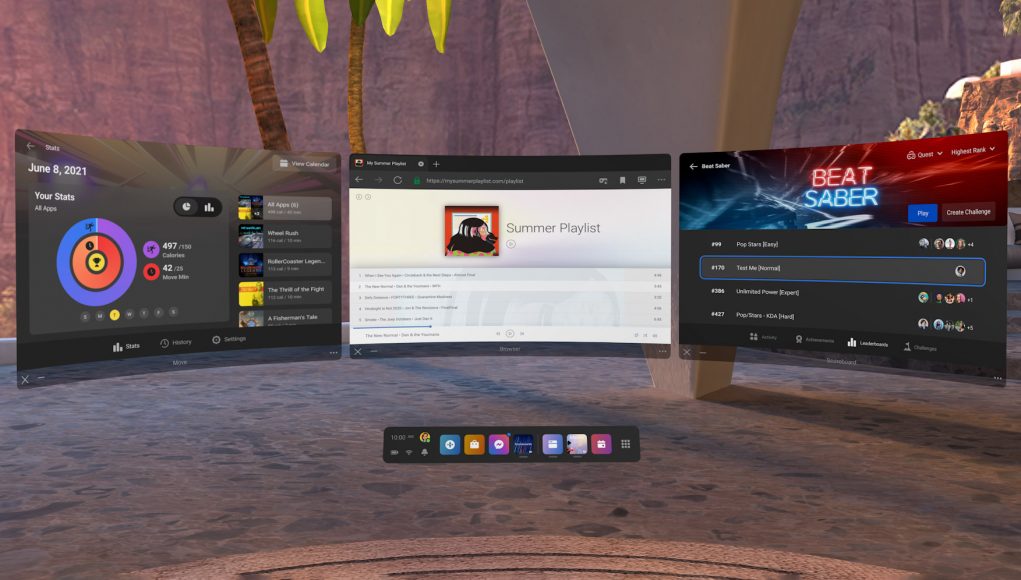Introduction and Background
As I have stated in Part 1 and Part 2 of my review of the ML1, the ML1’s image is exceedingly soft/blurry. The ML1’s optical quality is so poor that it is cutting the effective resolution by roughly half both horizontally and vertically.
I have wanted to do this “shootout” since CES in January this year (2018). It is a chance to compare three different waveguide-based headsets, the two more famous ones using diffraction waveguides, Hololens, and Magic Leap, and one from Lumus, less well-known company with a non-diffraction waveguide. I was impressed with the image quality of Lumus compared to the diffraction waveguides when I visited their booth at CES in 2017 and 2018.
For this article, I’m primarily going to be comparing the resolution of the Magic Leap One (ML1), Microsoft HoloLens, and Lumus DK-Vision. All three use “total internal reflection” (TIR) to support a thin “waveguide.”
The ML1 and HoloLens use a series of diffraction gratings to make the light enter and exit the waveguide. Hololens has a waveguide for each of red, green, and blue whereas the ML1 as two per each color, for a total of 6 waveguides, to support their focus planes concept. I discussed the ML1 and Hololens waveguides some more in part 1 (see the “Background on Diffraction Waveguides” section).
Lumus, with what they call a “Light-guide Optical Element” (LOE), has a single waveguide that works on all colors. The thickness of their one LOE is similar to the stack of multiple (one per red, green, and blue) thinner waveguides on Hololens. They simply cut the waveguide’s entrance at an angle to get the light to enter (rather than use a color specific diffraction grating), and then they use a series of very specially designed partial mirrors to cause the light to exit.
Picture Taking and Test Patterns
For taking the pictures I used the same Olympus OM-D E-M10 Mark III mirrorless camera with the same 14-42mm lens for all of them through the optics pictures. For the closeup images, it netted between about 3.4 and 6+ camera pixels per pixel displayed by the various headsets. You can click on the pictures to see them at much higher resolution. I took hundreds of pictures of each display and then picked the best area within the test pattern to try to show each device at its best.
The test patterns are based on ones I have found useful in testing other displays. There are a series of 320 x 240 sub-patterns for the testing of resolution that can be replicated the number of times to fill out the display resolution. There are some large circles to detect color purity across the display. I also replace one or two pictures of a colorful scene with a person in it to check for color. For anyone that would like to verify or challenge my results, the test patterns used can be found on HERE.
Optical Subsystems – Display Device, Projector Optics, and Waveguide Combiner
At a high level, the three headsets have similar optical architectures. All three of the headset use field sequential color (FSC) and Liquid Crystal on Silicon (LCOS) microdisplays but they come from different LCOS manufacturers. Each of them has “projector optics” that collimate and manipulate the image for injection into their respective waveguides. Where the headsets most differ is in their waveguide structures. I will try where possible to disambiguate the effects caused by differences in the non-waveguide parts of the system, particularly their different LCOS devices.
The Headsets: ML1, HoloLens, and Lumus
Magic Leap One
The ML1 uses a diffractive waveguide and blocks about 85% of the real-world light. You might note how you can’t see the user’s eyes in the picture on the left. It has a 1280 x 960 LCOS microdisplay made by Omnivision, but as will be demonstrated, the effective resolution is much lower. It has about a 45°diagonal and 40° horizontal field of view (FOV).
The ML1 supports about 220 cd/m2. In displaying the test pattern, I was only able to see the ML1 displaying about 1160 of the 1280 horizontal pixels is it supposed to have. I suspect the missing ~120 pixels are being used for interpupillary distance (IPD) adjustment. The iFixit teardown (in which I helped) showed that the ML1 device has a custom resolution made by Omnivision, and it is likely the using the same 4.5-micron pixel pitch of Omnivision’s 1080p and 720p devices.
Microsoft Hololens
The Microsoft HoloLens uses diffractive waveguides similar to the ML1 and blocks about 60% of the light which lets about 2.7x more light through than the ML1. In the picture on the right, you can see the wearer’s eyes, but they are darkened. It uses a 1366 x 768-pixel LCOS microdisplay made by Himax and has roughly a 35° diagonal and 30° horizontal field of view (FOV).
I was able to see ~1270 of the 1280 horizontal pixels in the test pattern when viewed at full frame. HoloLens supports about 320 cd/m2 at full brightness or about 1.5x brighter than the ML1. It is likely that the Himax FSC LCOS device used in HoloLens is using an ~6-micron pixel pitch based on their nearest publicly specified device.
Lumus DK-Vision
Lumus’s DK-Vision displays 1920 x 1080 pixels (1080p) or roughly double that of the ML1 and HoloLens. I first wrote about the DK-Vision in my CES 2018 AR Overview, and there is a flyer on the Lumus Website. The Lumus LOE has a series of polarized semi-mirrors that act as vertical FOV and pupil expanders. The Lumus headset blocks only about 20% of the light letting through ~5.3x more light than the ML1 and ~2x than HoloLens. I don’t have a direct measurement of the brightness of the Lumus headset, but based on the camera settings, it very roughly has 1,000 cd/m2 making it about five times brighter than the ML1 and three times that of the HoloLens (Lumus also has military products that go up to 6,500cd/m2). Lumus claims the DK-Vision currently can support up 2,000 cd/m2 will eventually support up to 3,000 cd/m2 or about an order of magnitude brighter than the ML1 and Hololens. The 1080p Raontech LCOS device used in the Lumus headset has a 6.3-micron pixel pitch.
Some Comments About the Lumus DK-Vision Prototype and its LCOS Display Device
I want to be clear that while the ML1 and HoloLens are low volume developer kit products, the Lumus headset is only a referenced. The ML1 and HoloLens have many features that are not included in the Lumus demo device. The Lumus device, while it does have cameras, inertial measurement, and an Android processor, it does not all the features (such as SLAM), found in Magic Leap and Hololens.
The LCOS device in the Lumus unit is also an early prototype (non-production) 1080p device from Raontech and as such is not necessarily indicative of their final product. The color balance and grayscale response were frankly not very good which is not uncommon with it being a prototype and not a product. I did make some white balance adjustments to the photos as a) it was a prototype, and b) the goal was to compare the optics, and c) it is not clear that the Raontech will be in a final product as Lumus uses LCOS devices from various manufacturers.
As the Lumus headset is one of a few existing prototypes, they are likely hand-picking and assembling the units and therefore it may not be indicative of the final production product. At the same time with manufacturing volume, the quality should improve. Lumus has recently concluded a manufacturing partnership with Quanta which could improve their ability to manufacture in volume. I also want to note that I had special access to the Lumus prototype (see the disclosure in the appendix).
A key thing that affected the results is that the black versus white response of the Raontech LCOS panel was highly asymmetrical with it strongly favoring black over white. One-pixel wide white lines are barely visible whereas one-pixel wide black lines are nearly twice as wide as they should be. There is always some level of difference in the black versus white response of any liquid crystal based display due to the LC behavior and drive, but the Raontech asymmetry is extreme bad relative to other LCOS devices I have seen. This asymmetry also affects the overall look and even the grayscale/color response. I would hope Raontech would adjust their liquid crystal formula/processing in their LCOS device.
The Whole Field of View (FOV) Pictures
The pictures below show the whole field of view for each headset. These pictures are not to scale. The horizontal FOV of HoloLens is ~30°, the ML1 is ~35°, and the Lumus is also about 35°. Each sub-pattern (with the numbered circle and variable sized text) in the test pattern is 320 x 240 pixels. Lumus prototype is showing almost double the horizontal pixels of the ML1 and HoloLens. You may also notice that while Lumus and Hololens have roughly a 16:9 (HDTV like) wider aspect ratio, the ML1 is squarer with its nominal 4:3 ratio.
Viewing the whole test pattern gives an overall feel for the image quality and how the color varies across the FOV. The pictures have about 2,600 to 2,900 camera pixels horizontally (if you click on the thumbnails) which is not enough to fully evaluate the resolution of images that are between 1,140 and 1920 pixels wide. One would like well more than two camera pixels (samples) per display pixel based on basic sampling theory and the Nyquist rate.
Both HoloLens and the ML1 have significant issues with color shifting across the FOV which is even more evident in the black on white images to follow. Lumus only has some shifting in the far corners. In the Lumus image, the smaller text appears to be dimmer/fading which is a result of the LCOS device behavior.
I did notice that the Lumus DK-Vision has some vertical pincushion distortion not seen in the ML1 or HoloLens. I suspect the pincushioning is in their projection optics and not the waveguide itself. There are also some double images in some of the sub-patterns (particularly sub-patterns 26 and 36) on the far right. It should be noted that this is a prototype and not a production product so hopefully, some or all of this will be improved before production.
Next, we have the black on white background images. The Lumus LOE waveguide has dramatically better color and brightness uniformity across the field compared to both HoloLens and Magic Leap diffraction waveguides. The Lumus display does show a slight dark band about row 5 (51 to 56) of the sub-patterns which I suspect is caused by the matching of the LOE partitions. Additionally, the lower left corner has some color shift and dimming. Since the asymmetry of the LCOS device they are using favors black over white, the small text does not fade the way it did with the white text on black background.
Equal FOV Close-ups
For this next set of pictures, the camera is zoomed the same amount for the larger image, so you can see roughly equal parts of the FOV for each device, each at roughly the same scale. In the picture, there is an inset of just the 3-, 2-, and 1-pixel wide lines. Hololens has about the same number of horizontal pixels as ML1 but has a smaller FOV and thus the image and the inset image is smaller when scaled similarly. It should be noted that the insert for the Lumus DK-Vision has been magnified and additional 2x so you can see the detail.
So as viewed by the eye, the two pixel wide lines on the DK-Vision are about the same size and width as the 1 pixel wide lines on the ML1 and are better modulated than the 2 pixel wide lines (that are twice the size) on the ML1. The DK-Vision appears to have around 4X the horizontal and vertical angular resolution of the ML1.
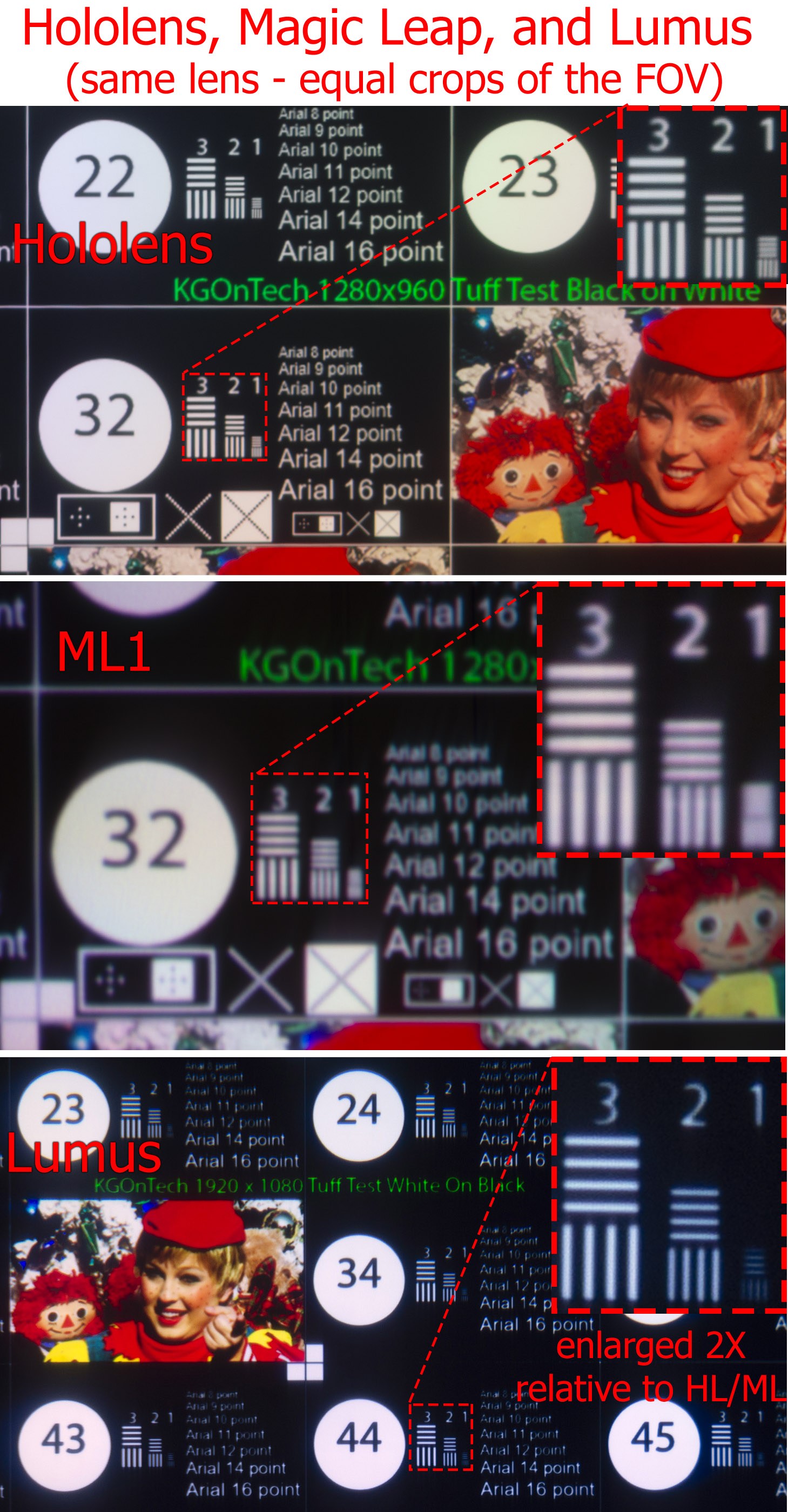
The black on white background pictures are below. Having a white background tends to see how much the optics scatter light. It should be noted in the case of the ML1 that the “black” one-pixel-wide lines do not get very black compared to both Hololens and the DK-Vision which indicates that the ML1 optics/waveguides are scattering light:
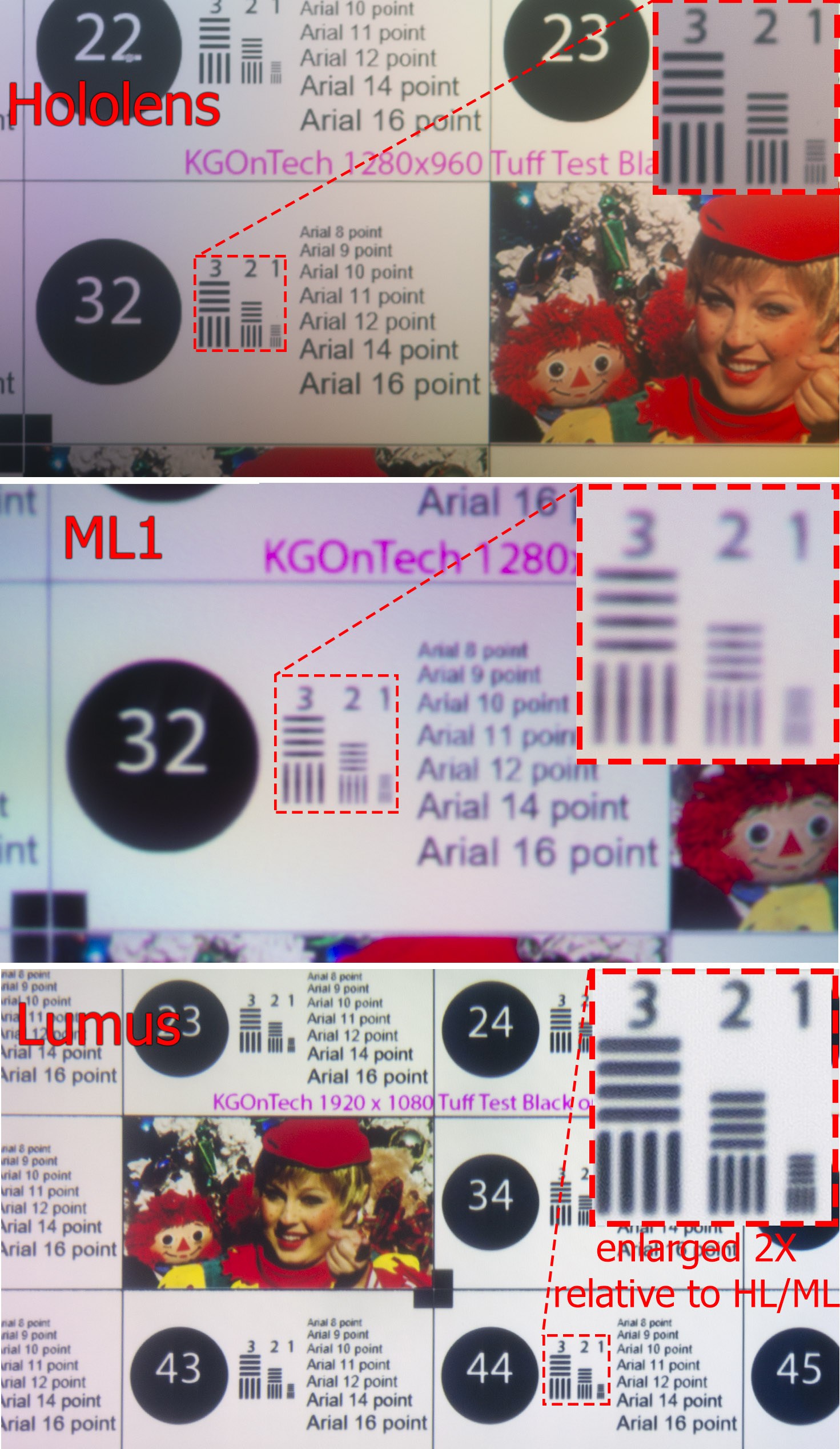
The 64 by 64 pattern crops side by side
Finally, below is the best 64 x 64 pixel sub-pattern for each headset. The sub-pattern has a set of 3-pixel wide lines with 3-pixel wide spaces, followed by 2-pixel wide lines and spaces, followed by 1-pixel wide lines and spaces. The purpose of this sub-pattern is to test the effective resolution of the optics and is based on the widely used 1951 USAF resolution chart.
The LCOS devices for the three parts are different and asymmetrical regarding their black to white and white to black transition as is demonstrated with the white on black versus the black on white images. The black on white field images shows if there are issues with scattering in the optics.
As stated previously, the Lumus has been enlarged to twice the relative size of the HoloLens and ML1 images. This means that the 2 pixel wide lines on Lumus in real life are very close to the size to that of the 1-pixel lines on the ML1.
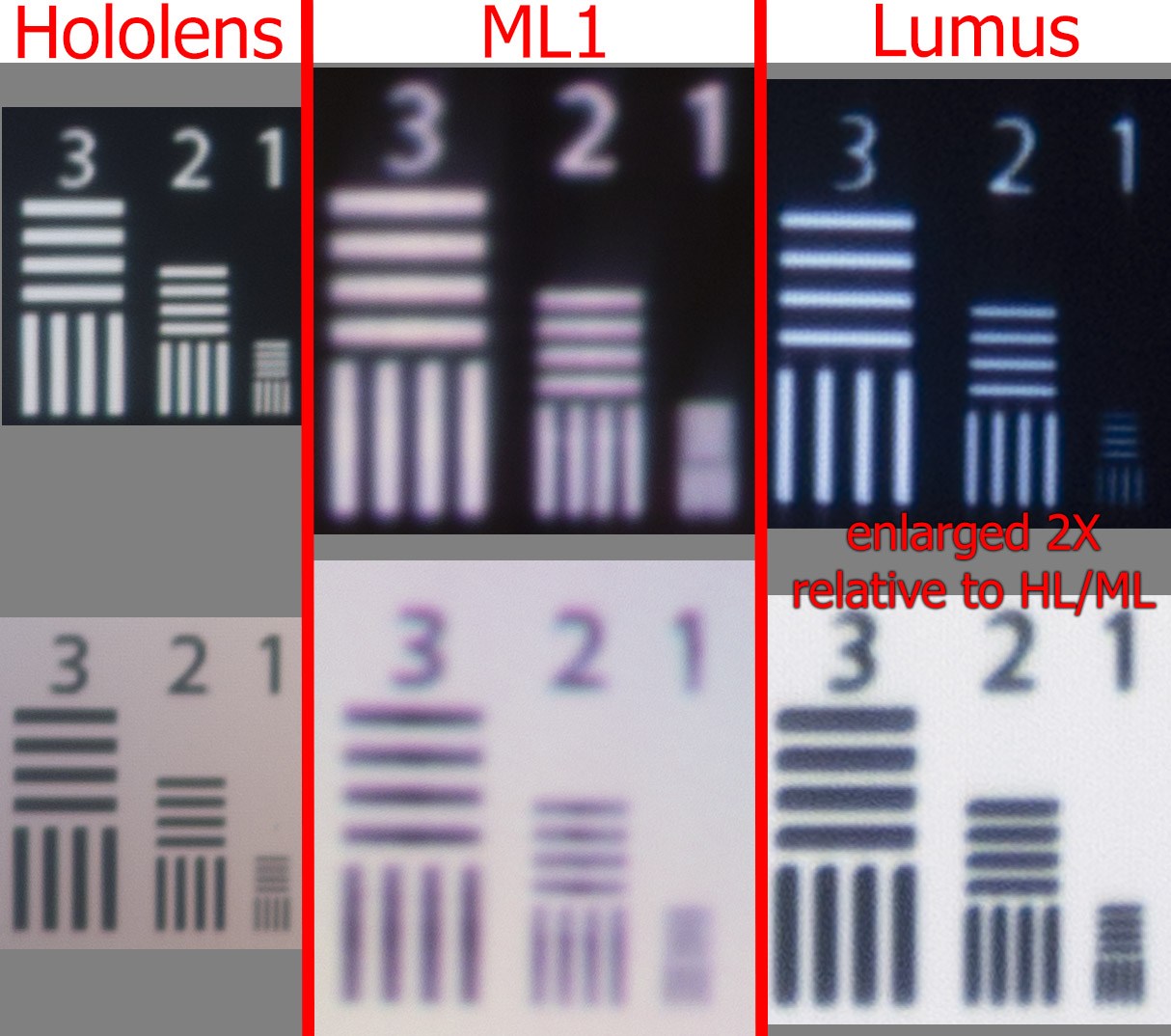
HoloLens can show 1 pixel wide lines, but they are not particularly sharp. The LCOS appears to be slightly biased in favor of white over black (one pixel white lines appear wider than the black lines). You may notice the white on black lines are wider (upper left) than the black on white lines (lower left). The contrast of the black on white lines is lower due to scattering (glow) of light in the HoloLens optics (waveguide and/or projector).
The ML1 shows almost no modulation of the single pixel lines. Even the two pixel wide lines are not particularly sharp when compared to the other two devices. From other experiments, I have noticed that the “on-off” contrast of the ML1 is better than HoloLens, but as the black lines on the white background demonstrate, the scattering of white light is significantly worse on the ML1. You should note how the even 3-pixel wide lines look very soft and rounded.
Similar to HoloLens, the ML1’s LCOS seem to have a slight bias in favor of white over black. Based on the available information, the ML1’s Omnivision microdisplay pixels are physically smaller (4.5 microns versus about 6 microns), and the need to do more magnification may be contributing to the much lower effective resolution of the ML1. Based on what I am seeing, the ML1 has at best maybe half of its stated resolution in each direction.
The ML1’s default image size resolution was so poor that I did a test to try and get more precision on its effective resolution. With the test pattern locked in space, I gradually moved toward it and stopped when I could just discern the 1-pixel wide lines. I then noted how many pixels were visible within the FOV and took a picture (below). The result was that at about 710 pixels wide I could start to see the discrete four lines. They still were not well modulated, but at least there were four lines visible.
The Lumus optics can resolve 1-pixel wide lines from a 1920 x 1080 display. The angular resolution is more than triple in each direction than that of the ML1 and is more like 4x. The limitation on the resolution of the Lumus system is the LCOS microdisplay. As can be seen in the white on black versus black on white images, the LCOS is highly asymmetrical in favoring black over white. This is particularly bad considering that the physical pixel sizes of the LCOS device are the biggest of the three at 6.3 microns. With the white on black, the 1-pixel white lines are very dim and thin while the black on white lines is very wide.
Looking at the enlarged image from the Lumus headset below carefully, you can even see a series of faint horizontal and vertical lines from the gaps between the LCOS pixel mirrors which are much less than the width of the pixels (and right at the limit ability to detect them with the camera and lens used). In this case, the resolution is being limited by the LCOS device. I will caution you that this is a “best case” subpattern (as it was for the other devices).
Conclusions
The ML1’s resolution is dismal when compared with HoloLens and Lumus. I used the same equipment and spent much more time trying to get the best images possible with the ML1. You certainly don’t want to be reading text on a Magic Leap one.
HoloLens, being from a big established company more or less hits the numbers dead on. There is a little cropping, but the 1-pixel lines are about what you would expect, they are a little soft but not bad. The “on-off” contrast of the Hololens is a bit low at a little better than 100:1.
The DK-Vision is in a different league in terms of resolution. But it is limited by the asymmetry of the LCOS device which is hopefully something that will be fixed.
Based on my observations, the ML1 tries to display about 1160 pixels horizontally with 40° horizontal FOV (about 45°diagonally). It works out to 2.06 arcminutes (one arcminute = 1/60th of a degree) per pixel. Because the ML1 blurs so much, it effectively can display only about four arcminutes per pixel. The HoloLens displays about 1024 pixels over about 30.5° horizontally or about 1.78 arcminutes/pixel or more than double that of the ML1. The DK-Vision displays 1080p pixels with approximately a 35° FOV (~40° diagonally), this works out to about a 1.08 arcminutes per pixel or about four times its effective resolution of the ML1.
Other Factors (Color, Transparency, and Brightness)
While this article is primarily focused on resolution, I want to add a few other observations on some significant differences I noticed between the headsets.
One thing that immediately impressed me with Lumus LOE over the Magic Leap and Hololens diffraction waveguides is the uniformity of the color and brightness across the FOV. Both Magic Leap and Hololens colors shift and ripple wildly across the FOV as seen in the full-screen pictures above. While the DK-Vision has some issues particularly in the corners, it obviously far better than the other two.
There are also major advantages for Lumus in the amount of transparency. Lumus only blocks about 20% of the real-world light where Magic Leap blocks about 85% and HoloLens 60%. This is the difference between being barely noticeable and putting on dark sunglasses. The ML1 significantly dulls real world. Another human factors issue is that you can see the wearer’s eyes with Lumus where they are blacked out with the ML1 and significantly darken with HoloLens.
The Lumus headset is also about an order of magnitude brighter than either the ML1 or HoloLens. This is necessary for the image to stand out with so much more transparent optics and to support outdoor use. Lumus claims to have a significant light efficiency advantage over the diffraction waveguides, and while I have not been able to verify this claim, it is believable. All three headsets use LCOS which should have similar reflectivity, but I suspect that the ML1 is losing some efficiency due to the dual focus planes (it likely happens in several places). If you simply crank up the power to the LEDs, they will get hotter and less efficient, which in turn leads to needing more heat management which adds bulk and weight, and this very quickly will spiral out of control.
Both the DK-Vision and ML1 use external battery packs, while the Hololens has internal batteries internal, but I don’t think this is a major factor in the differences in brightness. I think it is the light losses and heat management that limit the brightness.
Bottom Line
In short, while not perfect, the Lumus optics are much more of what I would expect in an “Augmented Reality” display in terms of overlaying virtual information on the real world. The Hololens is “serviceable” for indoor use in good lighting, but not nearly bright enough for outdoor use. The ML1 is pretty much a different type of VR game playing device that is only usable with a narrow range of lighting conditions.
I don’t know why Magic Leap and Microsoft both decided to use diffractive waveguides and I would welcome their response to this analysis. Both Magic Leap and Microsoft know about Lumus’s waveguides (I was in the Lumus booth with major individuals from both companies at CES 2017) and maybe they have their business or technical reasons. The issues I found with both the ML1 and Hololens are consistent with about a dozen other diffractive waveguides I have seen. In terms of every major factor including being transparent (and not causing artifacts), resolution, color uniformity, and brightness (optical efficiency) Lumus seems to win by a wide margin.
Disclosure
Back in early May 2018, I gave a paid presentation to Lumus on my perceptions and predictions for the AR market. I have done similar work for other companies. Prior to them asking me to give the presentation, I had already written favorable things about the Lumus LOE relative to the diffractive waveguides I had seen. Lumus additionally gave me special access to take pictures through the optics of the DK-Vision prototype during AWE 2018 in late May which are being used with their permission in this report. While I got permission from Lumus to use the pictures for this article since I had taken them in private, they did not have any control over my analysis.
Quelle:
Magic Leap, HoloLens, and Lumus Resolution “Shootout” (ML1 review part 3)

